Are you looking for a stunning flower to add beauty and color to your garden? If so, Kalanchoe could be the perfect pick! This brightly colored flower is one of the easiest plants to care for, thriving both indoors and outdoors with minimal attention. But if you’re thinking of putting your kalanchoe outside in the yard or in a garden bed, there are some things you need to know first. In this article, we’ll explain why it can be difficult (but still possible!) to grow these plants successfully outside—so read on if you want all the details about how best to care for kalanchoe outdoors!
Kalanchoe
Kalanchoe, a vibrant, low-maintenance plant, adorns many homes and gardens with its bright blossoms. However, the journey of cultivating it outdoors can be quite an adventure, requiring a balance of sunlight, temperature, and watering. Let’s delve into the fascinating world of growing and caring for Kalanchoe.
Characteristics & Types
Kalanchoe is native to Madagascar and is also prevalent in parts of Africa and Asia. [1] This resilient plant has adapted to a variety of climates and terrains, from arid deserts to misty highlands, contributing to its diverse range of characteristics and species.
Main Characteristics
Kalanchoe is a succulent, characterized by its thick, leathery leaves that store water. Capable of withstanding dry conditions, it is a drought-tolerant plant. Known for its vibrant and colorful flowers, kalanchoe blooms can range from red, yellow, pink to orange.
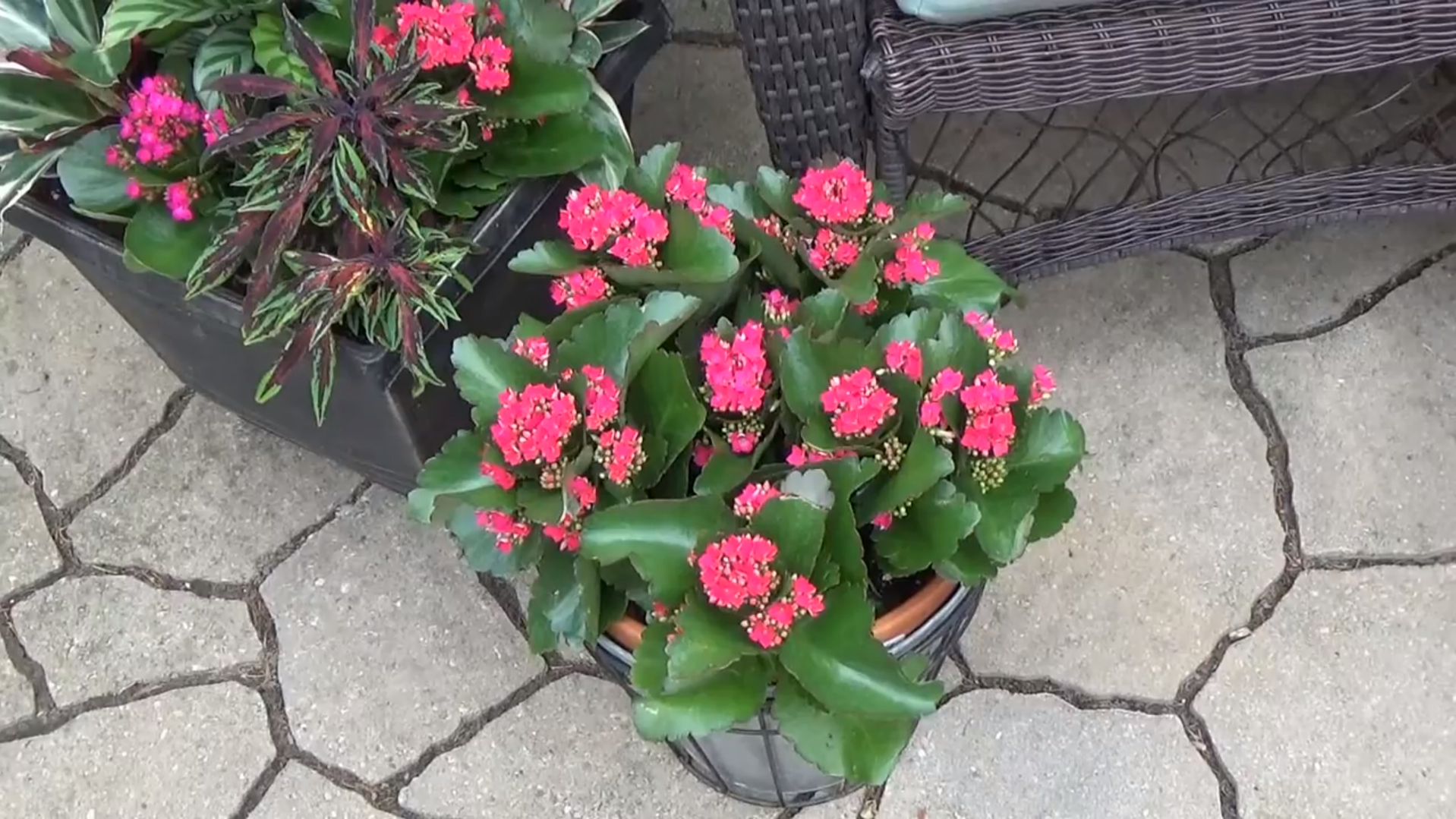
Main Types of Kalanchoe
- Kalanchoe blossfeldiana: The most common type, it is renowned for its bright flowers and dark-green, glossy leaves. Its flowers bloom in clusters and can last several weeks.
- Kalanchoe beharensis (Elephant’s ear kalanchoe): Recognizable by its large, velvety leaves, this type is often grown for its unique foliage rather than its flowers. [2]
- Kalanchoe daigremontiana (Mother of Thousands): This type gains its name from the tiny plantlets that grow along the edges of its leaves. It has a tall, erect stem and bell-shaped flowers.
- Kalanchoe pinnata (Cathedral Bells): This type features fleshy, scalloped leaves and clusters of bell-shaped, pendant flowers. It’s also known for its healing properties in traditional medicine.
Each type has its own set of requirements for care and maintenance, but all kalanchoes share a love for sunlight and well-drained soil.
Popularity of Kalanchoe as an outdoor decoration
Kalanchoe, with its vibrant blooms and low maintenance requirements, is a popular choice for outdoor decoration. Its brilliant flowers bring a splash of color to gardens, patios, and balconies. Often used as a focal point in landscape design, Kalanchoe’s ability to thrive in containers also makes it a favorite for hanging baskets, window boxes, and other outdoor display settings. Despite its tropical origin, this hardy plant can adapt to different climates, which contributes to its widespread appeal. From residential gardens to public parks and commercial landscaping projects, Kalanchoe’s aesthetic appeal and resilience make it a go-to plant for outdoor beautification.
Considerations Before Planting Kalanchoe Outside
Before deciding to plant kalanchoe outdoors, there are several key factors you need to consider. The first is the climate. Kalanchoe thrives in a warm, dry environment, and harsh winter conditions can be detrimental to the plant. If your region experiences cold winters, it’s advisable to grow kalanchoe in a pot that can be moved indoors when temperatures drop. [3]
Secondly, consider the location where you plan to place your kalanchoe. The plant loves sunlight but excessive direct sun can cause leaf burn. So, choose a location that gets plenty of light, but not harsh midday sun.
The third factor is the soil. Kalanchoe needs well-draining soil to prevent root rot. If your garden soil is heavy and clayey, consider using a cactus or succulent mix for your kalanchoe, or amending your soil with sand or perlite to improve drainage.
Lastly, consider the watering schedule. Overwatering is one of the fastest ways to kill a kalanchoe plant. Water your kalanchoe thoroughly, then allow the soil to dry out completely before watering again.
In summary, successful outdoor cultivation of kalanchoe involves careful consideration of climate, location, soil, and watering. With these considerations in mind, you’ll be well on your way to growing a healthy, vibrant kalanchoe outdoors.
Steps to Successfully Plant Kalanchoe Outside
Now that you’ve learned about the origins, characteristics, types, and outdoor care considerations for kalanchoe, let’s move on to the step-by-step process of planting kalanchoe outdoors. This guide will provide you with a structured approach to ensure your kalanchoe thrives in its new outdoor home. Let’s dive in!
Transplantation Timing
Selecting the appropriate timing for relocating your kalanchoe outdoors is vital to ensure its wellbeing and development. The best time is during the spring or early summer when the weather is warm but not excessively hot. At this time, the plant is in its active growth phase and can adapt better to a change in environment. Furthermore, this timing allows the plant to establish itself before winter arrives.
Transplanting in the cooler months can stress the plant and hinder its growth, as kalanchoes are not frost-tolerant. Proper timing of transplantation can make a significant difference in your kalanchoe’s ability to thrive in an outdoor setting, contributing to a lush, colorful display in your garden or patio.
Site Selection
The placement of your kalanchoe plant outdoors plays a significant role in its overall health and growth. An optimal location provides the right balance of sunlight and shade, which is crucial for the plant’s photosynthesis and energy production. Remember, while kalanchoe thrives on sunlight, too much direct sunlight, particularly during the hottest part of the day, can cause leaf burn and damage the plant. Therefore, consider placing your kalanchoe in a location where it will receive bright, but filtered sunlight.
Additionally, the site should have good air circulation to prevent the buildup of moisture and the onset of fungal diseases. Nevertheless, it is crucial to shield it from powerful winds that may result in physical harm to the plant.
In essence, to ensure that your kalanchoe plant thrives outdoors, the selected site should provide the plant with optimal light and air circulation, protect it from harsh environmental conditions, and offer suitable soil for its growth.

Soil Preparation
The health and vitality of your kalanchoe plant are significantly influenced by the type of soil in which it is planted. The soil serves as the primary source of nutrients and water for the plant, and it also provides support for the plant’s root system. Therefore, it’s essential to choose the best soil for your Kalanchoe plant.
Kalanchoe plants prefer well-draining soil. They are susceptible to root rot, a condition that often results from waterlogged soil, so the soil’s ability to drain excess water efficiently is crucial. The best soil for kalanchoe is a cactus or succulent mix, which is specially formulated to mimic the soil conditions in the plant’s native habitat. This type of soil mix is typically sandy or gritty, allowing for quick water drainage. [4]
When choosing soil for your kalanchoe, look for a mix that is labeled as well-draining or suitable for cacti and succulents. Also, check the soil’s texture by feeling it between your fingers. It should feel light, loose, and gritty, not compacted or clayey. If your garden soil does not meet these conditions, you can amend it with coarse sand, perlite, or grit to improve drainage.
Transplantation Technique
Once the suitable transplantation time, outdoor site, and soil type have been determined, it’s time to proceed with the planting process. Start by digging a hole at your chosen site that is twice as wide and just as deep as the Kalanchoe’s root ball. Remove any stones or debris from the hole, and roughen the sides and bottom with a hand trowel to make it easier for the roots to penetrate the soil.
Next, remove the kalanchoe plant from its current container, being careful not to damage the roots. Inspect the root ball and prune any dead or damaged roots. Position the plant in the middle of the dug hole, making sure that the upper part of the root ball is even with or slightly higher than the surrounding soil. It’s important not to plant the kalanchoe too deeply as this could lead to stem rot.
Refill the hole using the prepped soil, carefully compacting it around the plant’s base. Then, give the kalanchoe a thorough watering, making sure the water is well-drained. For the best results, add a layer of mulch around the plant’s base. This will help in retaining moisture, preventing weed growth, and keeping the soil temperature stable. This planting process will ensure your kalanchoe has a solid foundation to grow and flourish in its new outdoor environment.
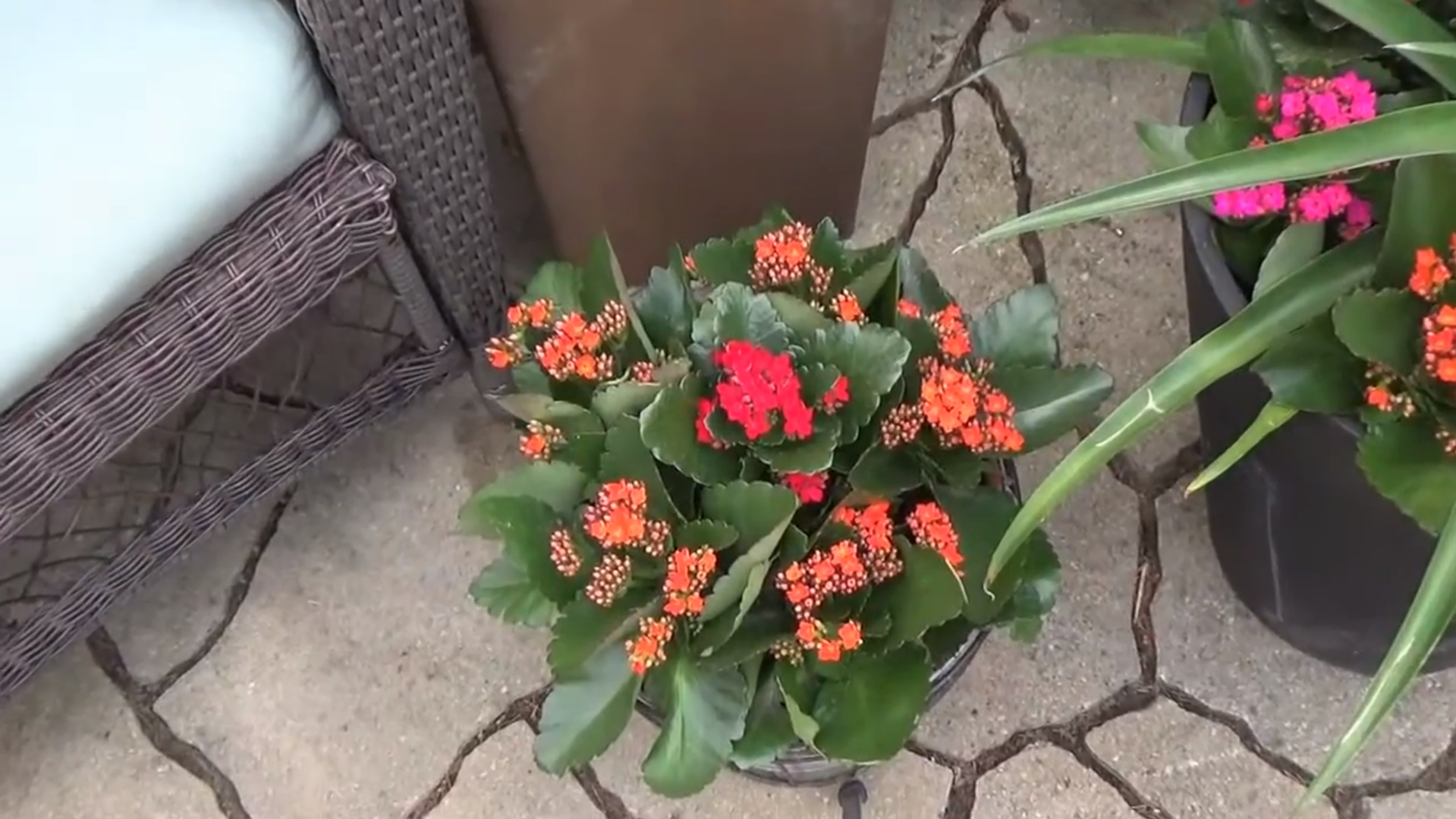
Watering and Mulching
Watering and mulching are critical aspects of kalanchoe care, helping to maintain optimal soil moisture levels and temperature.
As succulents, kalanchoes are drought-tolerant and require less frequent watering than many other plants. Deep watering is necessary, ensuring the soil is thoroughly saturated. It is important to allow the soil to completely dry out before the subsequent watering session. This watering pattern mimics the plant’s natural desert-like environment and helps prevent problems such as root rot. During the warmer months, watering may be needed weekly, while in the cooler months, watering can often be reduced to every other week or even less often. It is advisable to always assess the soil’s moisture level prior to watering.
By properly watering and mulching your kalanchoe plant, you can ensure its health and longevity while enhancing its aesthetic appeal in your garden.
Caring for Outdoor Kalanchoe
Caring for outdoor kalanchoe plants successfully involves understanding their growth patterns and adapting gardening practices to meet their needs. Here are some tips and life hacks to help you along the way:
- Pruning: Regular pruning keeps your kalanchoe healthy and promotes bushier growth. Prune back the plant after blooming, removing spent flowers and any leggy or overgrown stems.
- Fertilizing: Feed your kalanchoe once every few months during spring and summer, using a balanced fertilizer. To prevent root damage, it is important to moisten the plant with water prior to applying fertilizer.
- Pest Control: Watch out for common pests like mealybugs and aphids. A quick solution is a mixture of a small amount of dish soap in water, which you can spray onto the plant to get rid of these pests.
- Repotting: Kalanchoe plants outgrow their pots over time. When you notice the roots growing out of the drainage hole or the plant becoming top-heavy, it’s time to repot. Move the plant into a new pot that is 1-2 inches larger in diameter.
- Winter Care: If you live in a region with harsh winters, consider moving your potted kalanchoe plants indoors during the coldest months. If that’s not possible, cover the plant with a frost blanket for protection.
By following these tips, you can ensure that your kalanchoe plants thrive and continue to add beauty to your garden or outdoor space year-round.
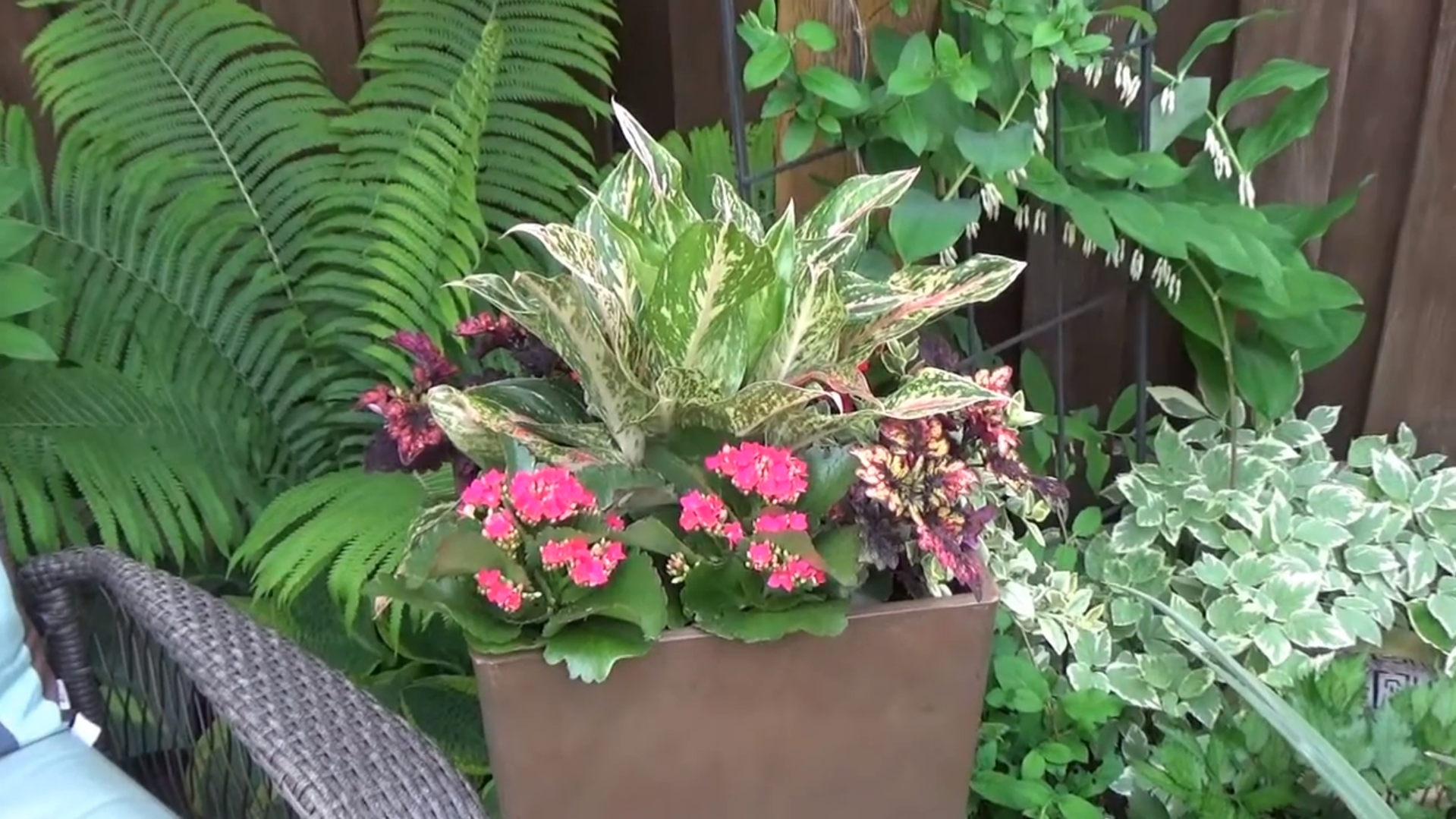
Decorative Ideas for Home and Garden
Kalanchoe plants, with their vibrant flowers and succulent leaves, are versatile additions to any home or garden. Their low-maintenance nature and stunning aesthetics make them a popular choice.
- Container Gardens: Kalanchoes thrive in pots and containers, both indoors and outdoors. Choose containers with good drainage and fill them with well-draining soil. You can arrange pots of various sizes for a tiered display or group kalanchoes with other succulents for a textured, varied look.
- Window Boxes: Brighten up your windows with boxes full of blooming kalanchoes. Complement them with trailing vines or other tall plants for a dynamic, visually appealing display.
- Rock Gardens: Kalanchoes’ native habitat is rocky terrains, so they’re a perfect choice for rock gardens. Nestle them among stones and other desert plants for an appealing, low-maintenance garden.
- Hanging Baskets: Certain trailing varieties of kalanchoe, such as ‘Mother of Thousands,’ work well in hanging baskets. They provide a splash of color and texture to porches, patios, or indoor spaces.
- Indoor Terrariums: Create a mini indoor desert landscape using a glass terrarium. Kalanchoes, with their small size and slow growth, are ideal for this setup. Add some sand, pebbles, and other succulents for a complete look.
Remember, kalanchoes need plenty of light, so place them wherever they can get a good dose of sunshine, whether it’s a sunny windowsill indoors or a bright spot in your garden. By tapping into your imagination, these delightful plants have the power to enrich the aesthetics of your home and garden in endless ways.
Frequently Asked Questions
Can Kalanchoe survive outdoors?
Yes, kalanchoe can survive outdoors, but it is crucial to remember that these plants are native to the arid regions of Madagascar. As such, they prefer a warm, dry climate and well-drained soil. In cooler regions, outdoor kalanchoe should be grown in pots and brought indoors during the winter to prevent frost damage. Similarly, if your area experiences heavy rainfall, you may need to take measures to ensure the plant isn’t sitting in waterlogged soil, which can cause root rot. It’s also worth noting that kalanchoe plants need plenty of light, so they should be placed in a location that gets a good amount of sunshine.
Can I put my Kalanchoe outside in the summer?
Yes, you can definitely put your kalanchoe outside in the summer. In fact, kalanchoe plants typically enjoy outdoor conditions during the warmer months, as they appreciate plenty of light and a warm, dry climate. Just ensure that the plant is not placed in a location where it will be subjected to midday sun, as the intense heat and light can cause sunburn to the leaves. Instead, choose a spot with morning sun and afternoon shade.
Should a Kalanchoe be inside or outside?
Kalanchoe plants can thrive both indoors and outdoors, depending on the specific conditions. They are native to arid regions and prefer a warm, dry climate with plenty of light. Indoors, position the plant in a bright location, such as a sunny windowsill. Outdoors, can be placed in a garden area with good light exposure but not in direct midday sun to prevent leaf burn. In regions with cold winters or heavy rainfall, it’s best to grow kalanchoe in pots so they can be moved indoors or sheltered when necessary.
Useful Video: Can You Plant a Kalanchoe Outside?
Conclusion
All in all, the popularity of Kalanchoe as an outdoor decoration has been steadily rising for the past couple of years. Not only is it relatively easy to care for, but it also adds a hint of vibrant life and energy to your garden space. You don’t need any special preparation and the plants will happily thrive in your garden with minimal effort – just occasional pruning and watering! For those who are looking for a fresh burst of life in their outdoor area, Kalanchoe will surely do the trick. So why not try planting some in your own garden? With its remarkable display of blooming, you’ll be sure to have something truly magnificent that will make your neighbors jealous.
References:
- https://www.thejoyofplants.co.uk/kalancho%C3%AB
- https://homeplantsguide.com/houseplants/kalanchoe-beharensis-grow-and-care.html
- https://careofgarden.com/kalanchoe-survive-winter/
- https://www.mydomaine.com/kalanchoe-plant-5222570





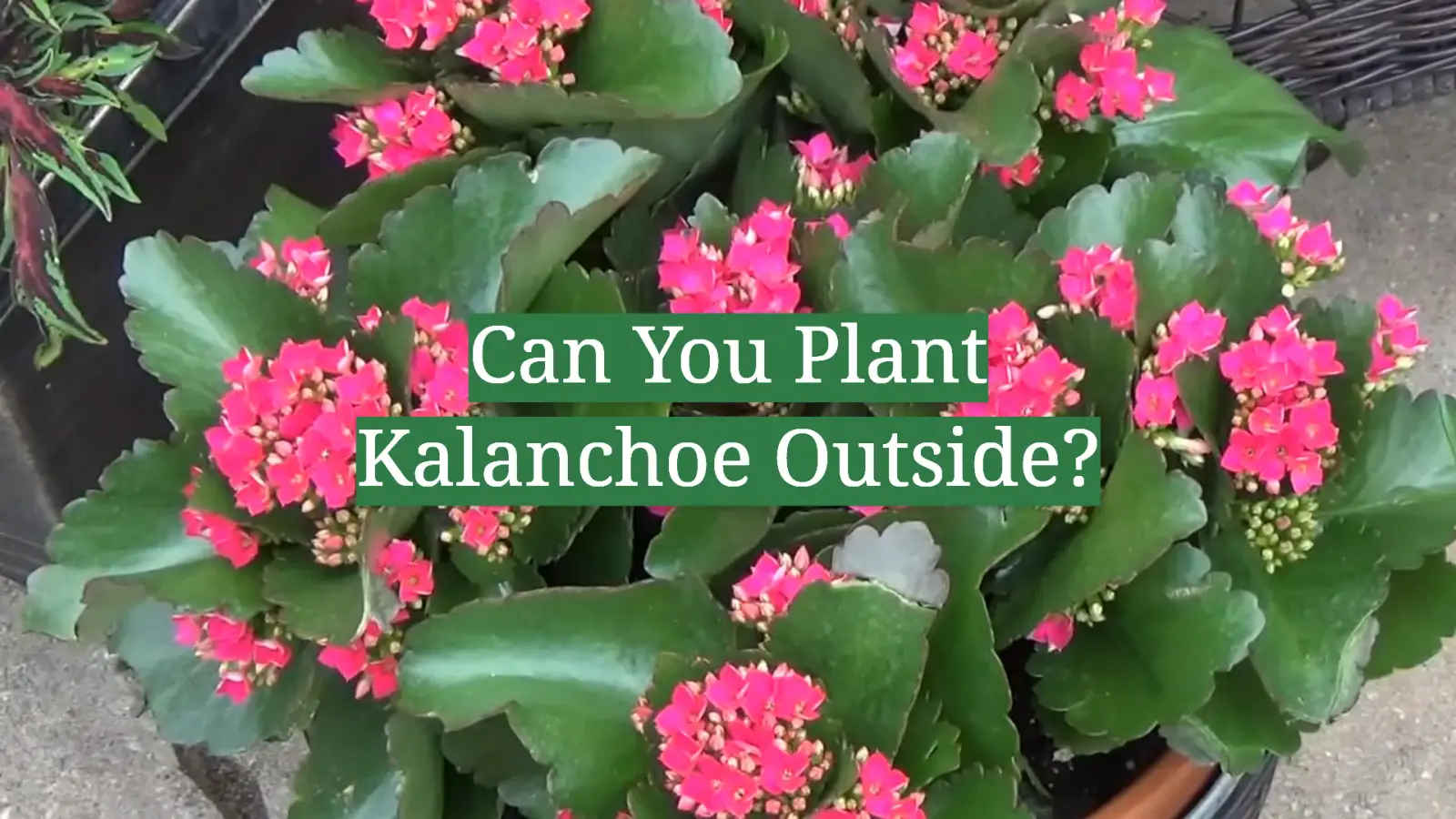
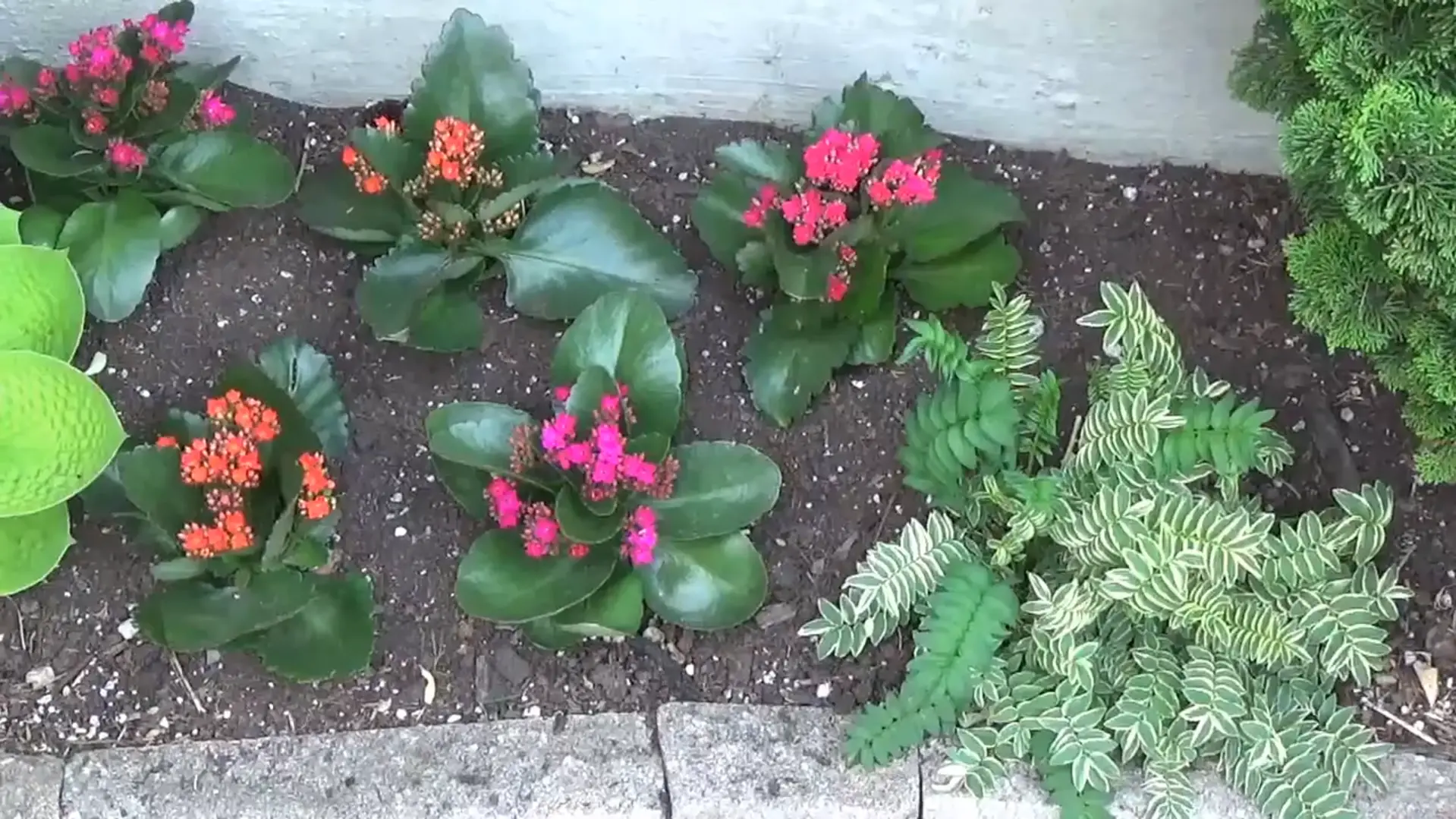
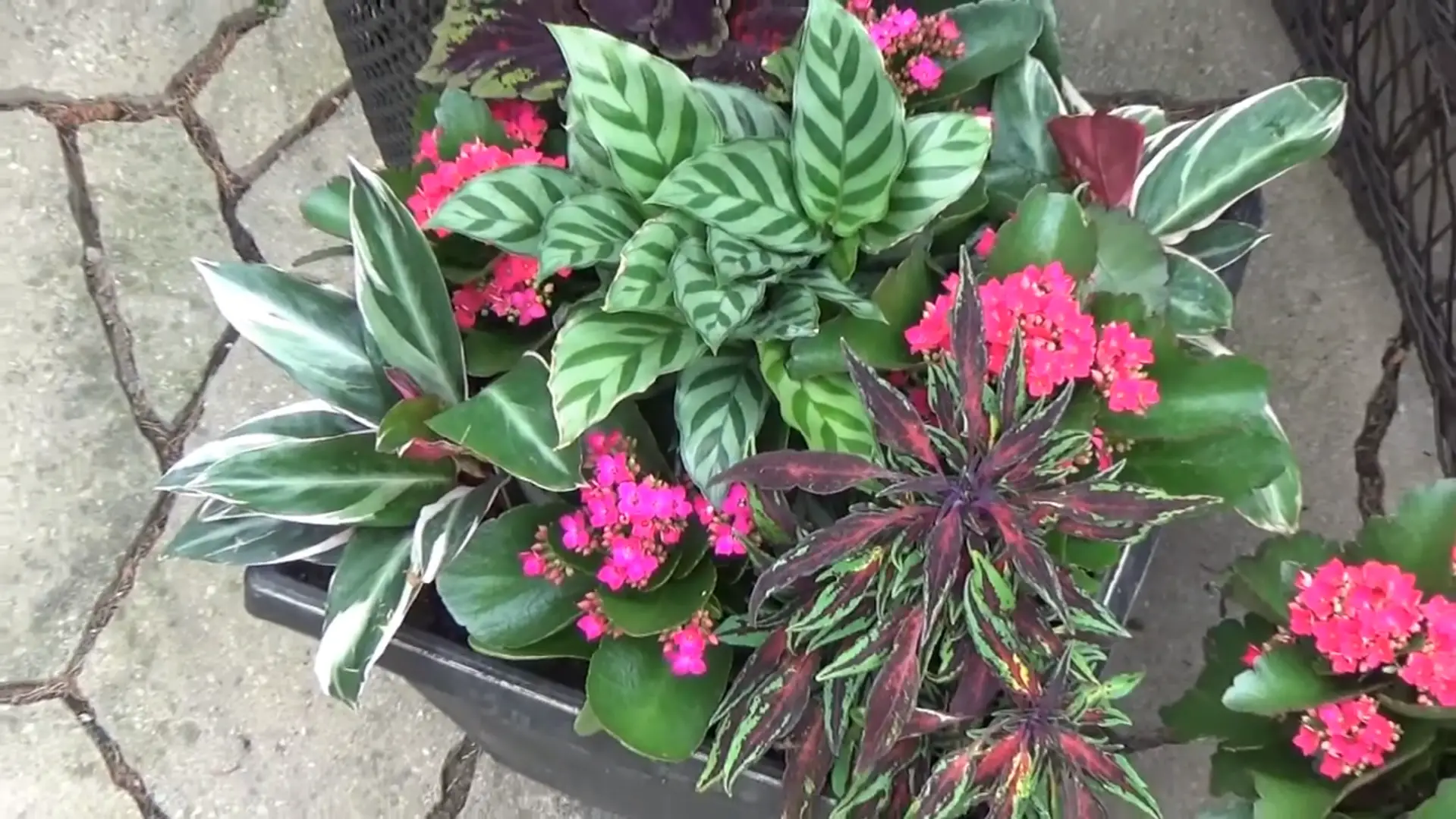




Leave a Reply
View Comments